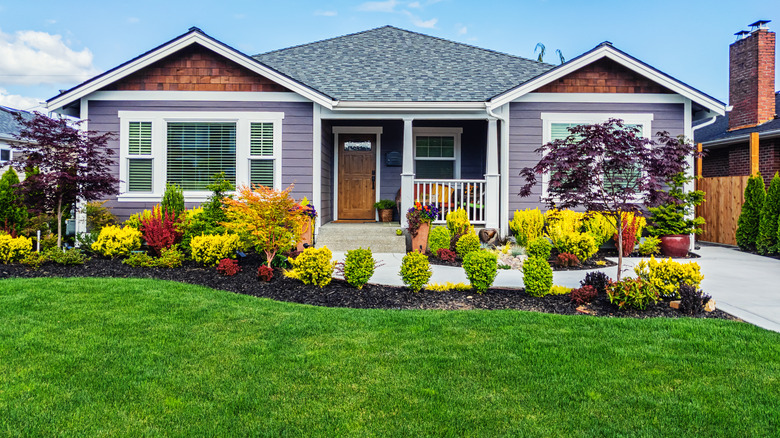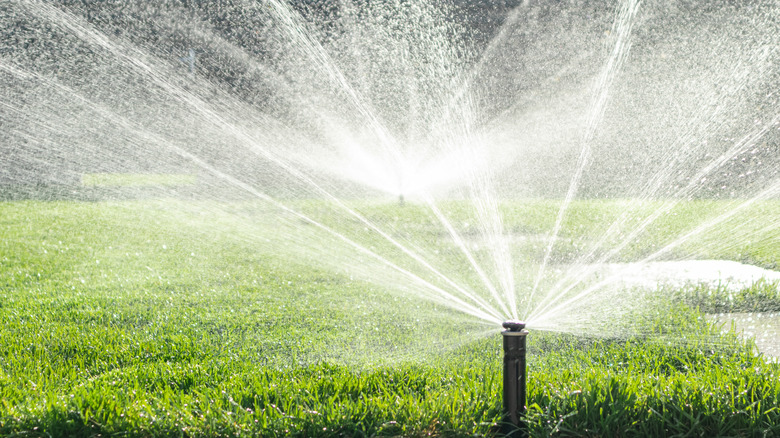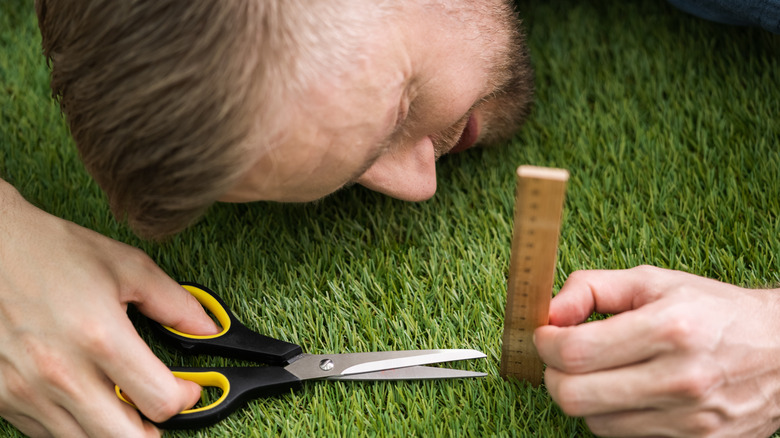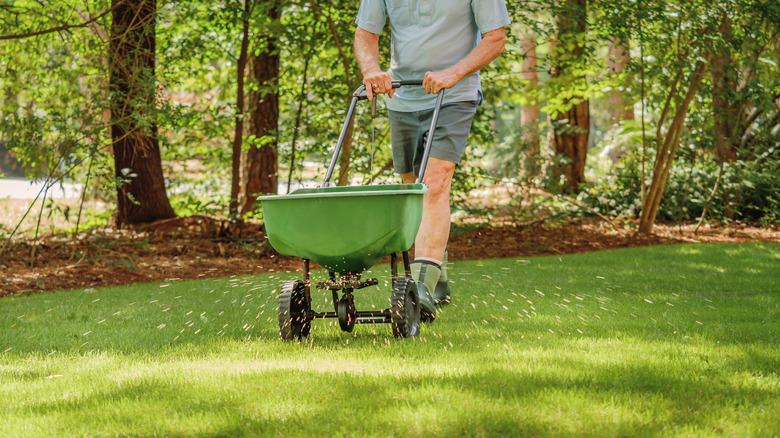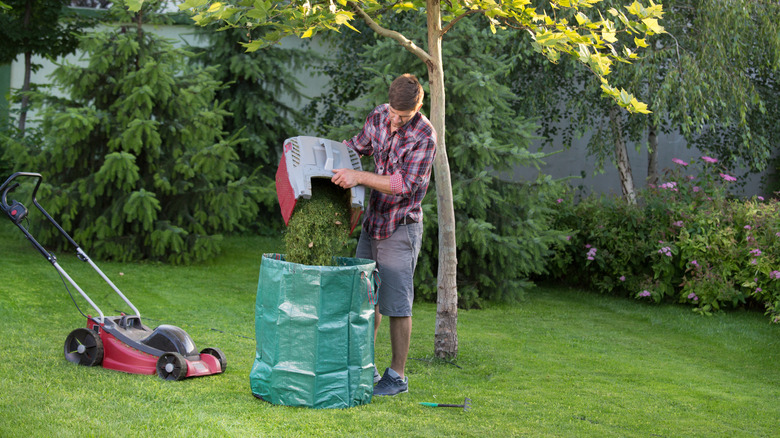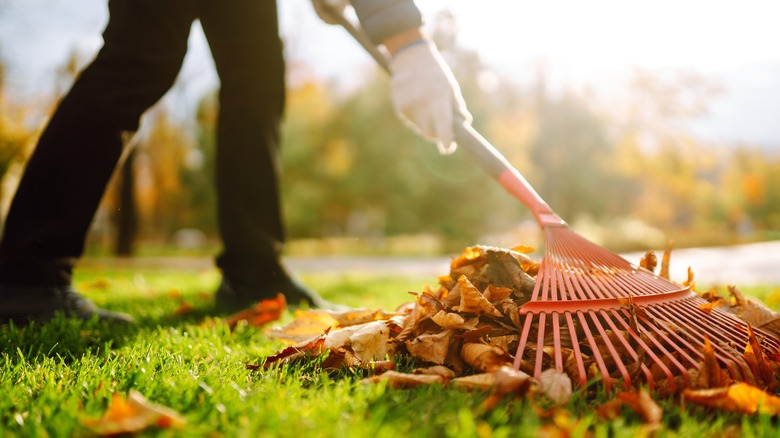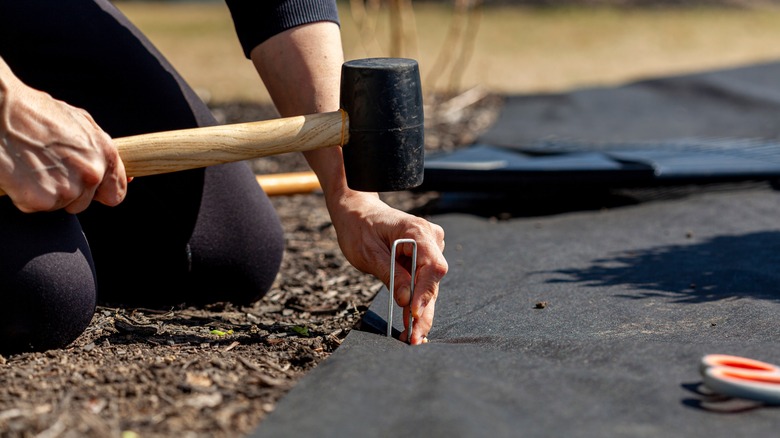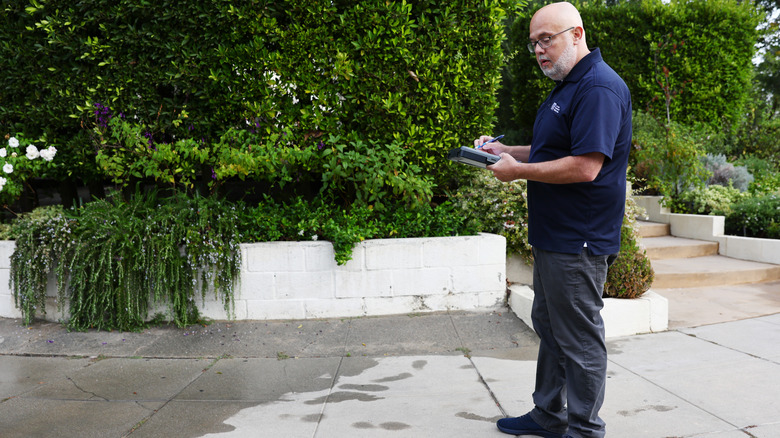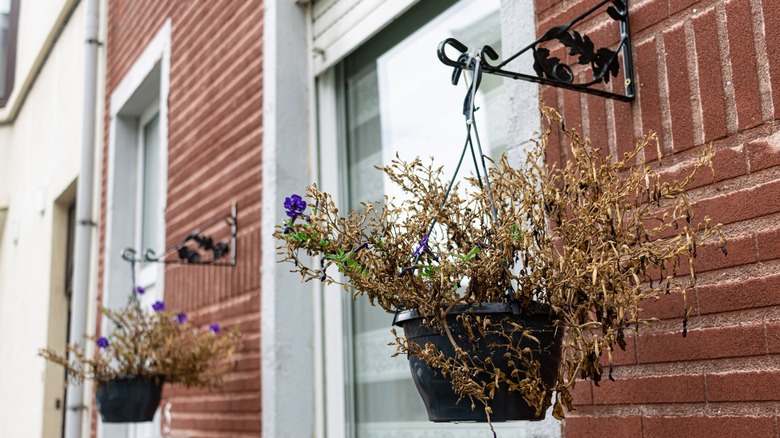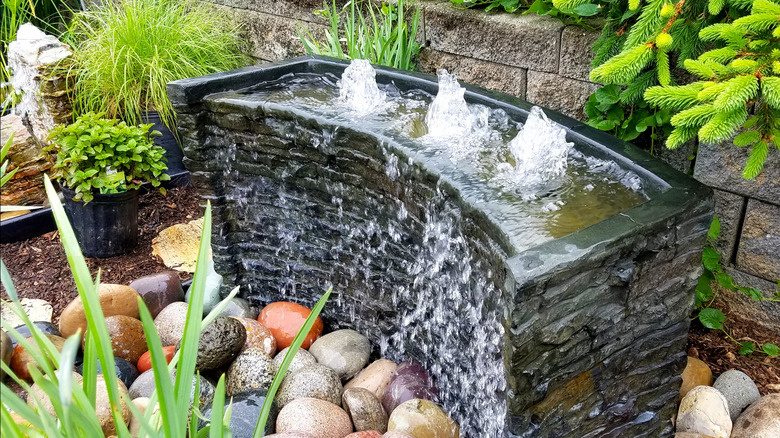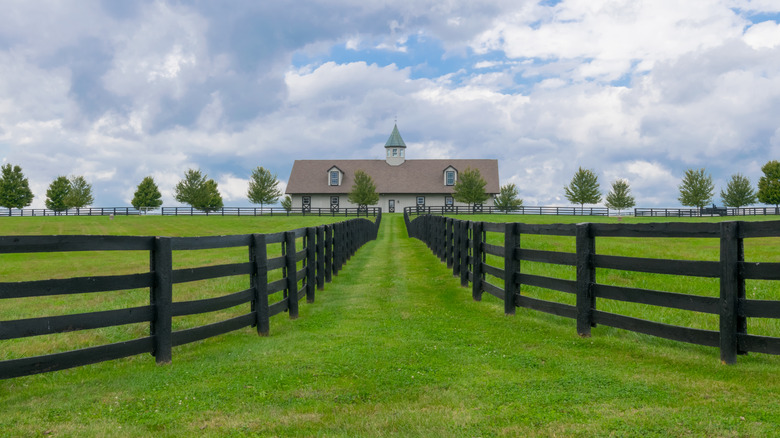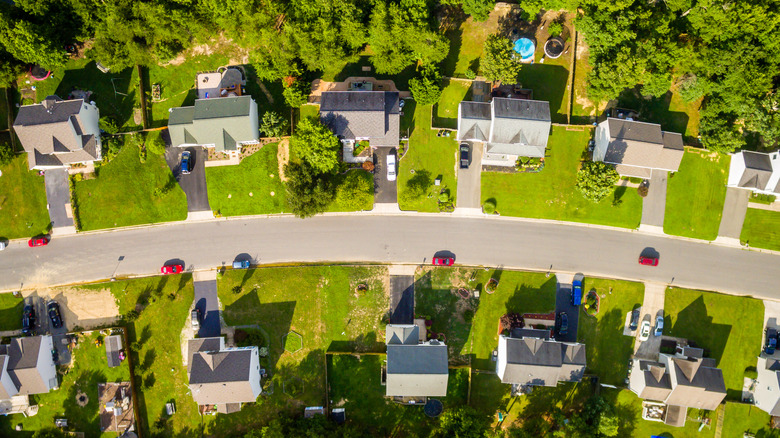Unnecessary Lawn Projects You Don't Actually Have To Do
No Mow May (along with No Mow April and Low Mow Spring) might have finally caused a hiccup in the inertia most of us experience about lawn care. The average American spends 70 hours per year mowing, weeding, fertilizing, and all the other little things we bury in a lawn. And Americans spend over $40 billion each year doing those things. What you get for that, aside from an excuse to drink yard beer, depends on what you're after. It might be exercise, a drive for order and control, or perhaps a deep love for grasses or croquet. But, as we'll see later, it's usually something else: keeping up with the Joneses.
And that's great if it's really how you want to spend your time and money. The trouble is that many lawn chores we set ourselves to are unnecessary, and some are downright counterproductive or harmful.
And there are probably a few philosophical decisions to ponder along the way. Just remember that it's your party, and you can sign up for the lawn-to-meadow movement if you want to (notwithstanding any prior commitments to your HOA). But you don't have to buy in fully to the back-to-nature, economy-blind point of view. There are some great approaches to having a great-looking lawn without breaking your bank and back, and we've highlighted the key strategies for you.
You don't have to water on a schedule
You should water your turfgrass when it needs water, which isn't nearly as often as you'd think. Americans use almost nine billion gallons of water per day outside, and most of that is for watering lawns. That's about 1.5 trillion gallons of water per year. It's difficult to even grasp what that means. It's somewhere around 160 times the capacity of Lake Mead (the one with the Hoover Dam). Just to water grass.
The goal of addressing this excess is two-pronged: use less water, and make sure the water you do use gets to the turfgrass. First, address the problem of overwatering by not giving your grass more than what it needs to be healthy ... usually 1-1.5 inches of water per week, including any rainfall. If your grass is green and springy, so that it bounces back when you walk on it, it has enough water.
Whatever time and money you save not watering as frequently probably needs to be spent making sure water gets where it needs to be. For lawns, this usually involves aerating the turf to make sure water doesn't just run off the surface, carrying fertilizer and pesticides downhill to some place they are almost certainly not needed.
You don't have to keep grass short
Taller grass is healthier grass. It has a stronger root system, is shocked less by mowing, handles hot weather more easily, and stifles competition from weeds. The ideal height is around 2.5 inches, but slightly less for warm-season varieties like Bahia, Bermuda, and Centipede. This is the height after cutting, and you should allow the grass to get about 50% taller than that before cutting it, roughly 3¾ inches on average. Cutting more than ⅓ of your turfgrass's blade height shocks the plants.
You should also let your grass grow longer during the summer. Aim for about an extra inch of height during the hottest months, which will provide shade to the soil underneath and protect the roots from heat damage and droughts. It also shades sprouted weeds, making them less vigorous and less likely to compete with the grass for water and nutrients.
You don't have to fertilize twice a year
Fertilizing your lawn keeps it lush and healthy, right up to the point at which it starts to kill the grass. In the best-case scenario, over-fertilizing doesn't do your plants any good. In the least ideal situations, it can damage the grass or run off with stormwater to unintended destinations like local waterways. Once there, it can cause many serious problems like toxic algal blooms and large dead zones along coastlines where there isn't enough dissolved oxygen in the water to support life.
You should fertilize once a year, probably in the fall, and let mulched clippings provide any additional fertilizer needed during the year. Fertilizer is most useful to grasses when the plants are focusing on root growth rather than producing greenery. In the northern portion of the United States, that's usually during the fall. Grass in more southern climes benefits from fertilization in late spring.
You don't have to bag your grass clippings
The conventional wisdom says that thatch, a buildup of plant matter, comes from failing to collect grass clippings. But, in fact, mulching your grass clippings is great for your lawn, and doesn't usually contribute to the thatch problem, which is caused by over-watering and over-fertilizing.
It works like this. Thatch, a buildup of living and dead plant matter — mostly grass clippings — at the base of your grass, can accumulate over time instead of breaking down properly. This is usually caused by over-fertilization and over-watering, which in turn causes grass to grow faster than the natural decomposition can keep up with. Without the excess water and fertilizer, grass clippings don't contribute to excessive thatch at all.
It probably goes without saying that mulching grass clippings in place is a more sensible approach than trucking in harmful lawn chemicals. And not just a little harmful, either. The EPA says most of the reports of wildlife poisonings it gets result directly from lawn chemicals. Exposure, directly or through overspray or contaminated groundwater, has been shown to cause increased cancer rates, immune system issues, congenital disabilities, and neurological disease.
You don't have to rake leaves, either
For many of the same reasons you should mulch your grass clippings, you should also skip raking up leaves and instead mulch them into your lawn. It's actually an important part of keeping your lawn and its ecosystem healthy. We have become so accustomed to battling nature that we feel we must constantly correct the natural order of things. But in this case, the opposite is true. As with grass clippings, there's no reason to take natural nutrients out of the local environment just to replace them with fertilizers that aren't as effective and have huge downsides. Run your mower over the fallen leaves when they've accumulated into a thin layer; that should be all that's necessary. A mulching mower will cut the leaves finer, causing them to break down faster, but it's not necessary.
It's unlikely you'll get an enormously thick layer of fallen leaves anywhere you are growing grass, but if you do find you have more than you can handle by mowing, rake them into an adjacent bed and let them compost themselves.
You don't have to use landscaping fabric
Weed barrier cloth doesn't work. Or, at least, it doesn't work well, and it has a bunch of downsides that are well worth avoiding. So many downsides, in fact, that using weed-control fabric is often a net negative. A pattern emerges if you look carefully at where landscaping fabric works best. It is most effective in areas of low light, lots of foot traffic, lots of mulch, and relatively little water. In other words, it works at keeping weeds and grass down where weeds and grass are already disinclined to grow in the first place.
When used in other areas, weeds tend to grow on top of the fabric, with roots reaching down through it for soil contact and water. Meanwhile, its weave lets in enough light that weeds also grow under the material. It's like trying to contain a riot with a velvet rope.
Light, being somewhat less domesticated than water, has an easier time getting through landscaping cloth, and a lot of rainwater or irrigation tends to run off the fabric, causing the soil underneath (and adjacent) to dry out. Meanwhile, airflow is reduced, and temperatures increase to the point of basically sterilizing the soil, so that only the worst and heartiest of weeds can compete. Sort of the opposite of what you were trying to accomplish.
You don't have to water and fertilize your driveway
It's not uncommon for irrigation, fertilizer, and pesticides to be accidentally applied to a landscape's hard surfaces. This is bad for your lawn, bad for the environment, and bad for your pocketbook.
Water falling on hard surfaces like driveways and roofs, as well as on highly compacted walkways and driveways, will create runoff, carrying fertilizer, chemicals, and sometimes your soil with it. However, with minimal care and attention, you can adjust your sprinkler systems to redirect them not to waste water on inappropriate surfaces. Also, be on the lookout for sprinkler heads that are misting rather than spraying, and adjust those as well so that the mist isn't carried on the wind away from your lawn and toward your parking space.
Okay, to be fair, no one is watering their driveway on purpose, and it'll probably take at least a little effort to correct the habit, so this is more a matter of having to do something different rather than not having to do something at all.
You don't have to plant seasonal or annual ornamentals
Encouraged by the nitrogen-fueled displays at big box home improvement centers, it's natural to want to improve your landscape with ornamental plantings that will spruce up the place for the spring or fall. These are often annual or seasonal plants, and if an ornamental plant is significant enough to improve your home's curb appeal, it probably takes up enough space that its absence (or the presence of its corpse) will detract from your landscape when the plants have died back. This can have the effect of reducing your home value rather than enhancing it.
The solution, of course, isn't surrender, but different choices. In this case, it's simple enough: plant perennials instead of annuals. You can choose replacement perennials based on their similarity to certain annuals. For example, you can swap heliopsis for sunflowers, Japanese Anemone for Cosmos, and perennial rather than annual varieties of flowers like Dianthus and salvia. By the way, perennials have the additional benefit of improving as the years go by.
If you have a particular fondness for some annuals, and most of us do, just restrict them to beds that won't be an eyesore when they're dry and barren mid-winter.
You don't have to have features everywhere
Outdoor living spaces are a great goal, but only if it feels like you're outdoors. Cluttering up your property with pools, water features, walkways, various installations for food preparation, and imposing garden structures tends to undermine outdoor life, create extra work, and even negatively affect your home's value.
Well-maintained water features, for example, can improve your home's appeal to potential buyers, but it's unlikely to increase the selling price significantly. On the other hand, a water feature in disrepair will almost certainly detract from the home's actual value... not what you were aiming for.
The trick here — both for your purposes and potential resale value — is to keep the investment in maintenance and upkeep to a minimum. Avoid wildlife like koi that have to be kept alive and healthy. If water is involved, keep the feature to a size that an easily replaced, affordable pump can service. Avoid areas that will quickly be overgrown by adjacent plant life or great, unappealing algae blooms. Make sure to choose a design and materials that can be cleaned with as little time and effort as possible. And, if possible, the more removable or portable, the better.
You don't have to grow Kentucky bluegrass
Growing a variety of grass that's compatible with your region and your rainfall is the key to managing a lawn without an excess of chemicals and irrigation. You might hear encouragement to use "native" grasses, but the important point is geographical compatibility. Any popular turfgrass is already growing in lawns all over your area, so protecting against invasive non-native species isn't much of an issue.
In the deep South, like it or not, you will be better served by grass species like Bermuda and St. Augustine. Rather than going dormant during the height of summer, they will generally be far more heat- and drought-tolerant than the cooler season varieties. Buffalograss is a good native choice for the South.
In milder northern areas, options like fescue, Kentucky bluegrass, and rye are available. They might go dormant during hot spells but will return to form after the temperature and rain return.
You don't have to do what your neighbors are doing
In the United States, you're free to do exactly what your homeowners' association wants you to do with your property. If you've managed to avoid that trap, don't volunteer for the trap of peer pressure. Research shows that keeping up with the Joneses motivates most lawn and landscaping decisions, but if you really get to know the Jonses, you'll realize you're better off making decisions for yourself.
As the suburbs continue to fill with expensive mowers and other accouterments of lawn care followership, it just becomes a fact of life that we must dedicate enormous amounts of time and money to the upkeep of a most useless crop like turfgrass. The mowers, by the way, aren't much better for the environment than the chemicals. And it turns out that whether you make all these investments, or keep lawn care to a minimum, is a function of how well you know your neighbors. A POLS ONE study found that knowing your neighbors' names makes you almost 10% more likely to water and fertilize your lawn. This will come as no surprise to suburbanites who have witnessed the territorial displays of homeowners on spotless zero-turn mowers cutting grass with the care of a Wrigley Field groundskeeper.
It's absurd, and deep down, we know it. Do what you want with your lawn, and let your neighbors be jealous of your ability to think for yourself.
